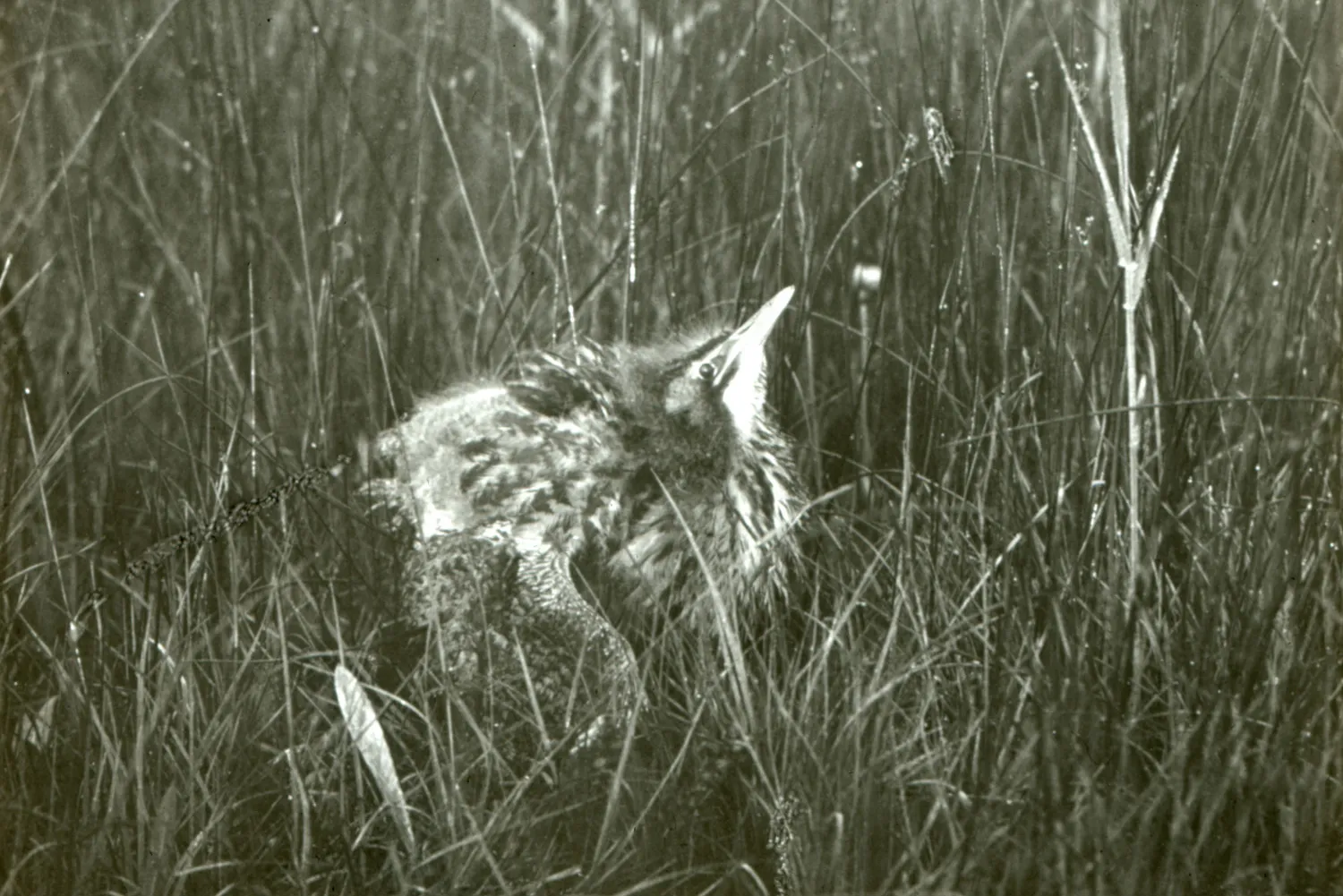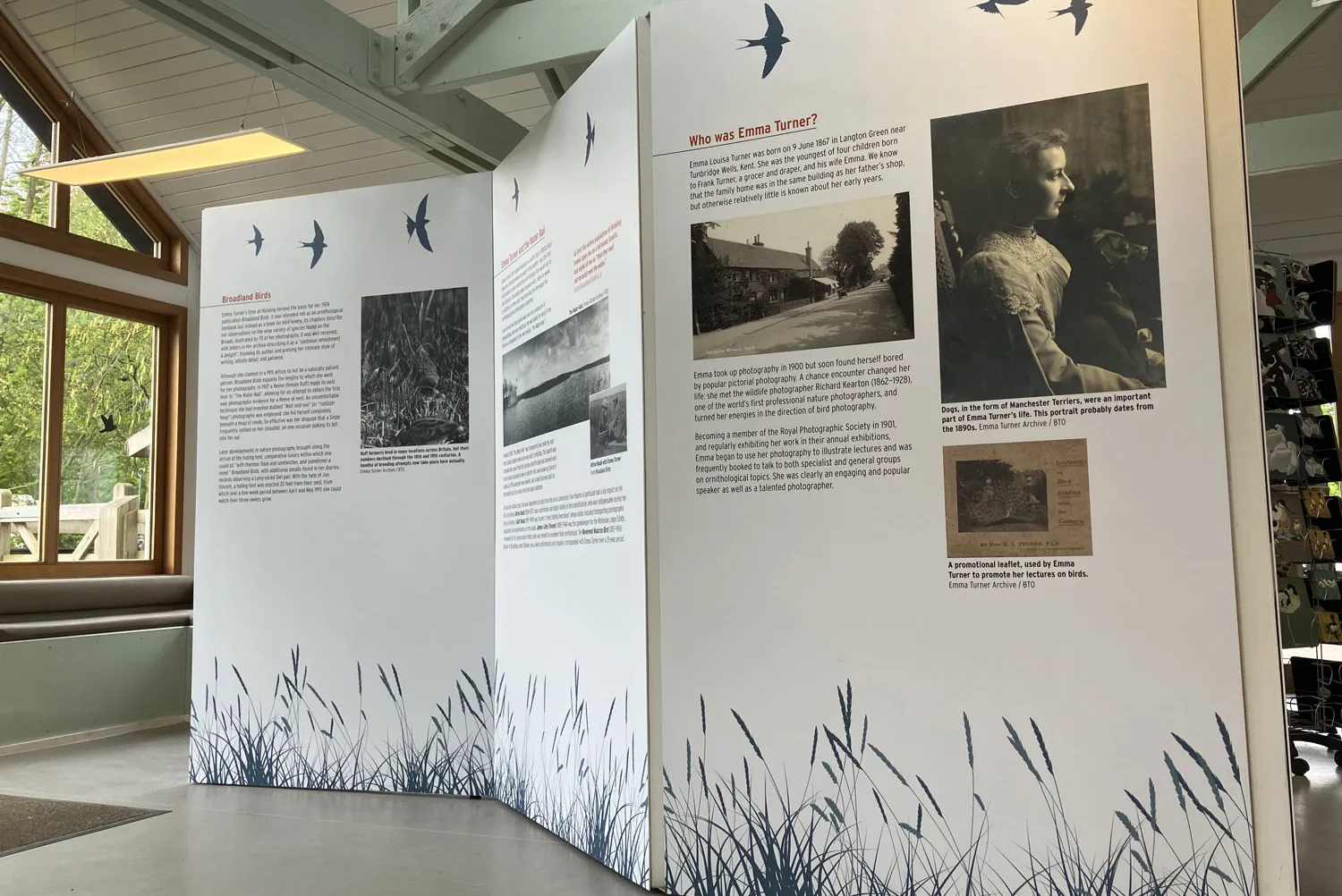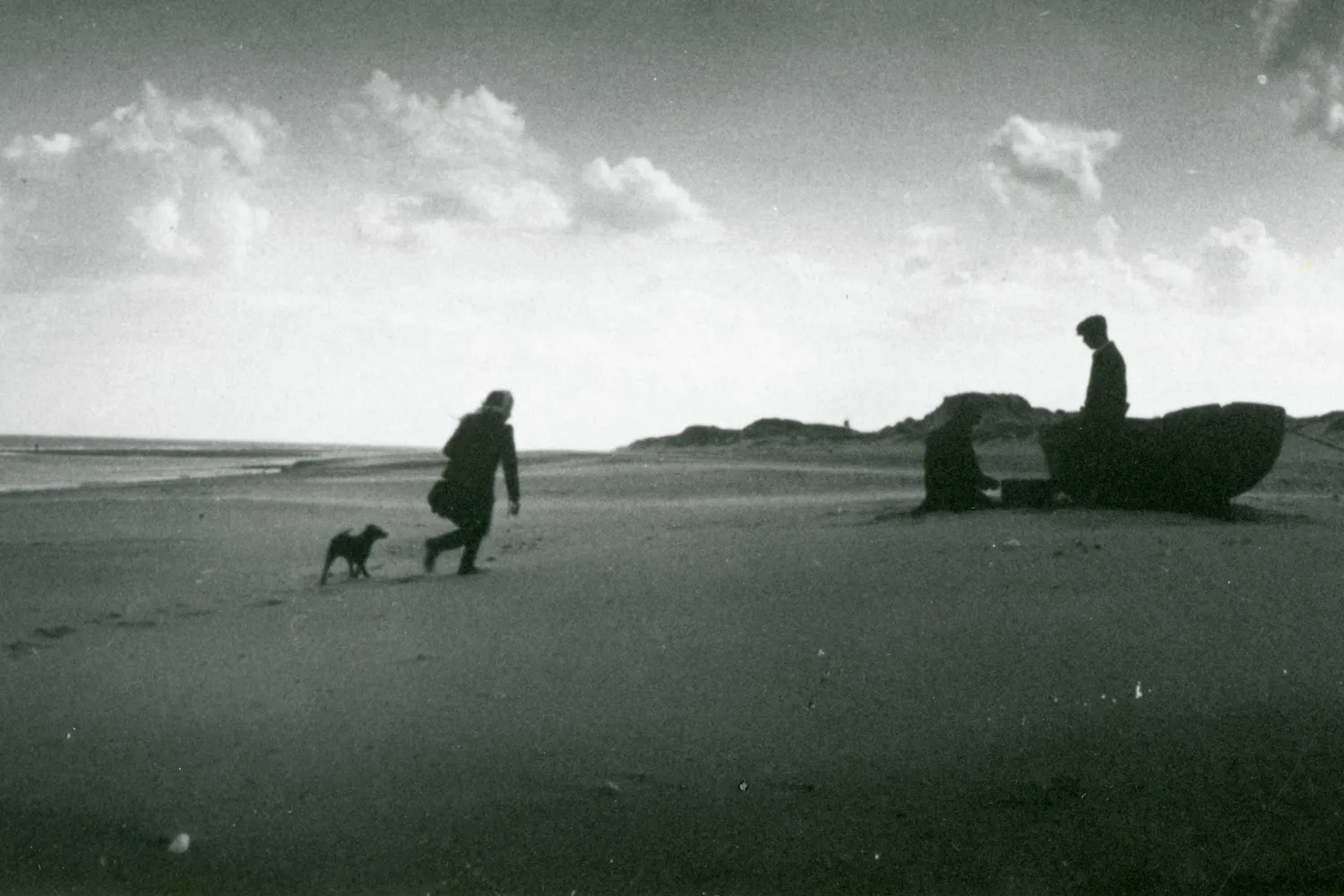Emma Louisa Turner (1867–1940) was a highly respected authority on birds in the early 20th century, particularly on the birdlife of the Norfolk Broads. She was the author of a number of wonderfully descriptive books, illustrated by some truly astonishing photographs including the famous sequence of a young Bittern taken in 1911. We’re very privileged to look after her archive of glass plate negatives and lantern slides in the BTO Archives, together with her fascinating personal papers including diaries, press cuttings and correspondence.
She was born in Langton Green, near Tunbridge Wells in Kent, the youngest child of John Turner, a grocer and draper, and his wife Emma (neé Overy). John’s shop and the family home were accommodated in the same building, and the family seems to have been quite well off financially. Following the death of her mother in 1880 family commitments would centre Emma in Kent for the next thirty years, but nature began to play an increasingly large role in her life.
In 1900 a chance encounter with the eminent wildlife photographer Richard Kearton (1862–1928) changed her life completely. She became a member of the Royal Photographic Society in 1901 and started to display her bird photographs publicly in exhibitions and by giving lantern slide lectures. She was a pioneer of “Wait-and-see” (sometimes called “rubbish heap”) photography, hiding herself for hours on end under piles of leaves and reeds. Her disguise proved so effective that on one memorable occasion a Snipe settled on her shoulder poking its bill into her ear!

Emma Turner was no less talented a writer, and she wrote prolifically with articles featuring regularly in magazines and journals such as Country Life, British Birds, and the Transactions of the Norfolk and Norwich Naturalists’ Society. She also contributed chapters to books by other authors, and herself wrote eight books. The correspondence and press cuttings she kept show these were extremely well-received by readers and the press alike.
When not in Kent she spent part of each year in Norfolk, predominantly living on a houseboat of her own design, The Water-Rail, which was launched in March 1905 and moored on Hickling Broad. Her knowledge of the birds of Norfolk was undisputed, and in 1924-25 she took up the position of Watcher at Scolt Head on the north Norfolk coast, looking after the large colonies of terns and other breeding birds such as Oystercatchers and Little Ringed Plovers. Her appointment caught the attention of the local press who, much to her annoyance, proclaimed her to be “the loneliest woman in England”.
Emma Turner passed away at her home in Cambridge on 13 August 1940, at the age of 73. Her pioneering photographic methods had captured aspects of bird behaviour never documented before, and she led the way for female ornithologists at a time when the field was largely dominated by men: she was one of the first 15 female fellows elected to the Linnean Society in 1904; and one of only four women to be elected as an honorary member of the British Ornithologists’ Union (BOU) in 1909. She played a huge role in our history as one of (and the only woman among) the eleven ornithologists who signed their names to the letter published in The Times announcing the formation of the Trust.
In 2024 we were delighted to partner with the Norfolk Wildlife Trust (NWT) to install a permanent interpretation panel about Emma Turner at the NWT Hickling Broad reserve.

